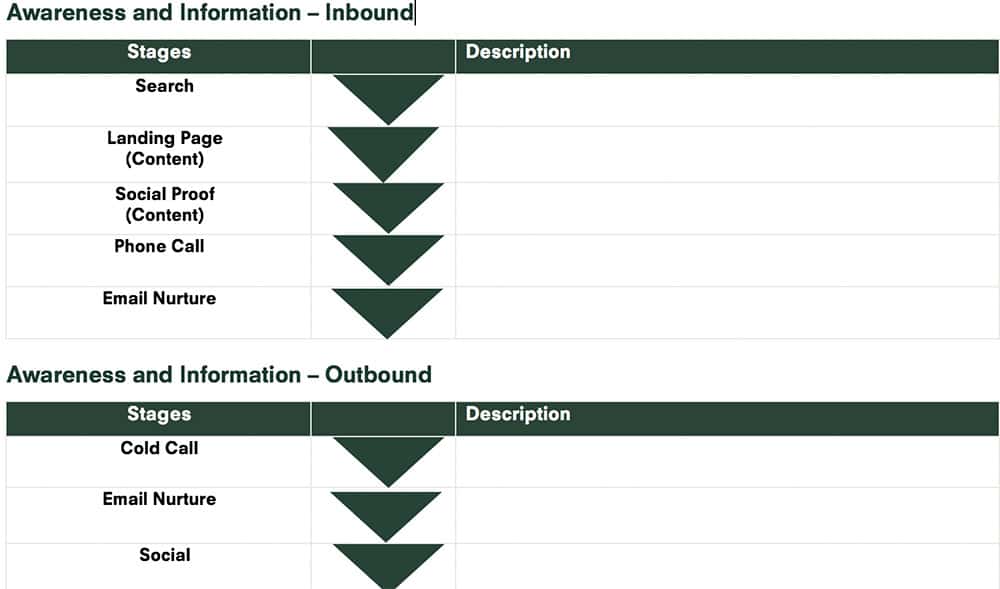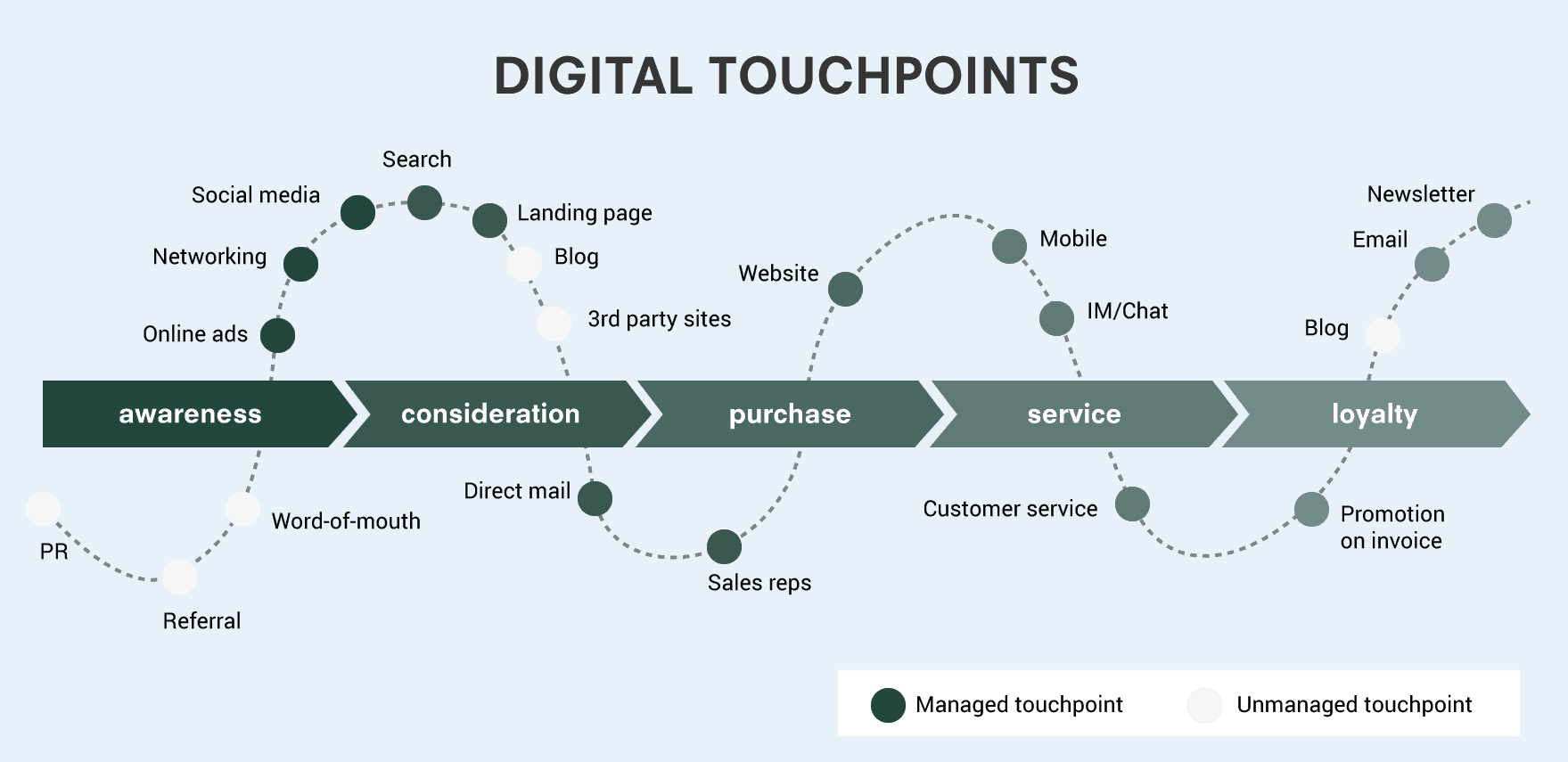Strategy
It’s one of the most overused pieces of jargon in business today. Everybody has got a strategy for this and a strategy for that, but you’ll be surprised how often I come across business owners who are crystal clear on their business strategy yet haven’t invested the time to develop a marketing strategy – the most critical avenue to guaranteeing a constant flow of customers!
Rewards to riches when you get it right, path to heartache if you get it wrong!
While nearly every business is dabbling in some form of marketing, most I see are doing so without the strategic framework to gain the outcomes and revenue growth they desire. That’s where investing the time up front to get your marketing strategy right (not an easy feat I might add) will save you weeks, months or even years of heartache down the track when things don’t go to plan.
Its all about getting from A to B!
A marketing strategy is effectively how you get from A (where you are today) to B (where you want to get to). It requires a lot of time, energy and focus to develop and tweak but it’s well worth it. If you don’t get it right, you’re going to face a strong headwind when you’re attempting to scale your Everest. If you do get it right, it will become a license to print money, as it will tell you exactly who is doing what and when they’re doing it, and what sort of results you’ll get. It will also quickly identify when things are going wrong, and how to get back on track.
IMHO “Strategy is one of the most misused words in business today”
The 3 phases to a great Marketing Strategy
Phase 1: Who are you selling what to, where are they and how are you going to engage and impress
- Task 1: Who: Define your target audience
- Task 2: What: Define your value proposition
- Task 3: Where and How: Define your customer journey
Phase 2: Planning the journey
- Task 4: Analysis of Current Situation
- Task 5: Set SMART Targets/Objectives
- Task 6: Prioritise objectives and spending
- Task 7: Plan Your Resources
- Task 8: Create the Road Map and Project plan
Phase 3: Get sh^t done! Get some quick results and grow revenue
- Task 9: Execute like a mofo!
- Task 10: Management
- Task 11: Optimisation
Phase 1: Who, What, Where and How
Task 1: Who – Define your target audience
The first step in building a great marketing strategy provides the smarts and foundations to all good marketing by getting crystal clear on who you are selling what to. In order to tap into your target market, you need to get to know them…intimately! It’s all about defining your ‘who’, that is your target audience (and it’s not female 18-65 by the way!). It needs to be way more specific than that and should consist of at least 3-4 different segments of ideal customers that all have different needs and wants. These segments obviously won’t account for all your customers, but you want to define them as best you can.

Where to start
There are a multitude of ways in which you can define your target audience and a wealth of resources available to help you do it. The best place to start however is with an internal brainstorm. We’ve provided a worksheet here for you to do that. The most important thing is to try and be as specific as you can.
- Demographics:
- For consumers: Such as age, gender, location and income
- For businesses: Industry, size, location and who within the business
- Problems: Why are they looking for your service, what challenges, pain points and opportunities can you identify?
- How: How are they going to try and solve this problem/opportunity
- Solutions: What information/solution are they looking for
This brainstorm will only take you a couple of hours to start to paint the picture of who your ideal customers are. You can take it much much further from here depending on where you’re at, the size and nature of your business.
It’s all in the data
The next part of this process is to delve into data to refine your target audiences and confirm that the information you have brainstormed is correct. You always get a little surprise when you dig into who your actual clients are. It may also raise some missing information that you want to start capturing. Start by analysing your customer data, either in your customer database or with Google Analytics, another great tool that will reveal a lot of useful insights about your customers. If you aren’t capturing this kind of information, then you should be surveying it. It’s quick and easy to survey some of your current customers to find out exactly who they are and where they’re at. Some key points to think about:
- Demographics: Male V Female, Post code, Age
- Lead Source – how did they hear about you?
- One off versus repeat business
- Top 20% of revenue generators versus bottom 80%
- Social and Mr Google (both which provide relevant information)
Define Your Customer Personas
Collating the data on your customers is really important as it will help you define your customer persona. Your customer personas are fictitious profiles of your ideal customer, segmented into target audiences that we want the marketing strategy to focus on. It brings together all of the information you’ve captured about who they are, where they are, what they like and dislike, and how they are likely to find out about your product or service. Customer personas basically help you and other people in your organisation understand them better and is a great reference tool to ensure that any marketing you’re undertaking is targeted specifically to each of your appropriate audiences.
Task 2: Define your value proposition
One of the hardest parts of a marketing strategy is defining your business value proposition; what value you as an organisation provides your target audiences. Another way to think of this is what are you being hired to do for them!
Defining your value proposition inevitably revolves around :
- Pain – how can you help ease the pain points in your customer’s life
- Gain – what is the solution they are seeking and what is the opportunity for you as a business to help
Point to note: Your value proposition should not describe features or benefits, but rather real value to the end user!
Your value proposition
A value proposition is a promise of value to be delivered. It’s the primary reason a prospect should buy from you. In a nutshell, value proposition is a clear statement that explains how your product solves customers’ problems or improves their situation (relevancy), delivers specific benefits (quantified value), and tells the ideal customer why they should buy from you and not from the competition (unique differentiation). It should be the first thing visitors see on your home page and vital to get right in your marketing strategy.
Where to start
Write in English (not jargon), and use the language of the customer to explain what the offer is and how they’d benefit. Write it like a pitch. You’re in an elevator and you have 5 seconds to tell them what your product/ service does and the benefit to them. When used on your website, your value proposition typically would consist of four things:
- Headline. 1 short sentence.
- Sub-headline or a 2-3 sentence paragraph. A specific explanation of what you do/offer, for whom and why is it useful.
- 3 bullet points. List the key benefits or features
- Visual. Image that reinforces points above.
Example Periscope

Periscope’s Value Proposition: Explore the world through someone else’s eyes. Why we like it
- It communicates the value users will get from using the app, rather than the features and benefits
- It ignites curiosity about sharing and engaging with the world around them
- It is simple yet sophisticated – the value proposition sits within the ‘search’ field at the top of the website with streaming videos filling the rest of the page – no other explanatory text is necessary.
Task 3: Define your customer journey
Defining your customer journey in your marketing strategy is an incredibly useful step in helping you to understand what touch points exist and how you can best communicate to your audience at each specific step along the way.
Here is quite a simple way to look at it:

Point of note: We want to be ensuring that we are adding real value from that first interaction.
We live in a world where customer is king. You’ve got seconds to impress your customers, so we need to ensure that at every opportunity we are demonstrating how good you are!
1. Awareness
This is about understanding how we are going to get more and more of your target audiences to find out about you. As part of your marketing strategy, you should decide on which marketing channels are best matched to your target audiences. For example, if you sell walking frames and your target market is elderly people 75 years+, you’re going to be wasting your time and money advertising on social media channels such as Facebook.
Choose your channels
Whilst we live in a digital world, there are a multitude of ways in which you can get your target audience interested in your offering, however not all are suitable or achievable given factors such as available budget. What you do want to aim for however is a good mix of both inbound and outbound strategies, starting with those that will give you the best return on your investment. We like to categorise them into two main streams: inbound and outbound.

2. Interest & decision making
Once your customers have become aware of you, you need to find ways that engage and ignite a genuine interest in your business, service or product. Consider how your target audience are researching and shopping for your products and services, and the factors that are influencing their decisions, and ensure you’re developing strategies to connect with your audience in these ways. One of the most important ways is consumer-driven marketing (such as internet reviews and word of mouth recommendations) according to a McKinsey report, proving that it is becoming more and more important for businesses to be coming at this from both angles.
3. Purchase
Making a good impression on your customers doesn’t stop at the purchase, it is in fact just the beginning! It’s basically the one experience that will shape their opinion on every future decision in the customer journey, including future purchases, so now is the time to win them over and gain their ongoing loyalty. Take a look at your purchase and post purchase touch points, and assess how well you are managing the customer’s expectations, including:
- Customer service: It needs to be exceptional, whether it’s live chat, phone, web enquiries or in store to ensure the lead up to and process of checkout runs smoothly and the customer feels comfortable with their decision.
- Check out process: Either in store or online, it has to be as easy and streamlined as possible. Use analytics to show you where things may be breaking down online, where customers are dropping off etc.
- Post purchase communications: Everyone loves a good ‘thank you’ for your purchase email and this is a good start but it shouldn’t stop there. Develop a tailored email strategy for each of your audiences that keeps you top of mind, lets them know about things they are interested in, provides them with exclusive offers to help them feel valued for being a customer.
- Returns Policy: Just like the checkout process, the returns process needs to be just as smooth.
- Deliveries: Customers want to have A Grade management of their returns or delivery of items. They want to have choice about everything, including about where and when it’s delivered. Ensuring a good experience is at this time is even more important when it comes to managing any issues that may arise.
4. Long term relationship – repeat! repeat! repeat!
This is the part of your marketing strategy that ensures your customers continue to buy from you again and again. It’s the way in which you build an ongoing relationship that drives repeat business and creates new business. In today’s consumer world, customer is king. They want it now, they want it tailored, they want to feel special and appreciated, and they are happy to come along for a ‘ride’ of enjoyment, entertainment and inspiration. Some ideas include:
- Thank them for being a customer, with honesty and earnestness.
- Feedback: Vital to all business is to survey them. But get personal. Take a customer out to lunch once per month to get the good the bad and the ugly
- Add value for free: Information, ideas and inspiration is simple and cheap. And customers are crying out for it!
- Make me feel special with discount offerings or exclusive ranges
- Outside the square: Think outside the square, some of the cheapest and best relationship builders aren’t your standard “email”! Offline/direct/mail are still great ways to engage with customers
Word of the day: ‘Wowie’: An Experience or object that makes the person feel amazing, awe inspiring This whole process is about making each and every potential customer and customer go “Wowie”. This is fundamental to any good marketing strategy. Challenge for you: How do you ensure all your customers go “Wowie”?
Phase 2: Planning the Journey
If there’s one thing we know from 15 years running multiple businesses, it’s that your marketing strategy can’t get you anywhere without a plan. You want to ensure that your marketing strategy has a clear plan on:
- Where you currently are?
- Where you want to get to?
- What is the quickest, easiest path to get results?
- What are the short term tactical improvements in what you currently do?
- What are the long term strategic steps to scalable revenue growth over 1, 2, 3+ years?

Task 4: Analysis of current situation
This is your current reality and provides insight as to where you are today. To do this properly, you need to have the right analytics in place so that you can measure exact outcomes to your business. It involves getting the data capture and integration right between your systems (POS, CRM, financials), and get your website and marketing channels talking to Google Analytics so that all the data passes smoothly and you can track exactly what activity is generating revenue for you. By doing this, you will know the good, the bad and the ugly and where the quick wins are to obtain revenue growth.
A strong marketing strategy will ensure you are tracking data on 3 levels:
- Overall business: What are the outcomes by source to your business in revenue, leads, foot traffic, growth and database?
- Marketing by channel: Of each of your marketing avenues, how are they performing in terms of generating revenue for your business? That’s offline, online, your database, word of mouth and advertising. How well is each and every one of those actually performing for your business, so that we can start to analyse what’s working and what’s not?
- Individual campaigns: Within those channels, and then for each of them individually. So, getting really granular with each individual aspect of your campaigns to determine how well they’re performing.
Today, there’s technology that allows you to track and report on nearly everything that you do.

Task 5: Set SMART Targets/Objectives
S – Specific, M – Measurable, A – Attainable/Actionable, R – Relevant, T – Timely
The next step in your marketing strategy is to define where exactly you want to get to. Use SMART goals to ensure your marketing goals align with your business goals, and to keep you on track by challenging your thinking at each step. Using SMART goals will also help you determine if your strategy is working and if you have to change course along the way.
Example of a poorly defined objective:
- To be better than my competitors
- To be the number one provider of organic dog food in Australia
- To create more brand awareness of Toggie Doggie
Examples of well-defined goals would be more like:
- Launch our new widget by Sept 30th and grow sales to $1Mil by June 30
- To increase sales of organic dog food across all states by 10% before the end of the year 2018
- To increase hits to the Toggie Doggie website by 30% by Quarter 2 FY19.
Need help building your marketing strategy?
Due North has a unique offering. When you work with us, you deal directly with our digital marketing superstars. Our team provides broad marketing expertise across a range of disciplines and are capable of both providing strategic advice and executing the plan. It’s a model we’re really proud of and produces some amazing results.
Task 6: Prioritise objectives and spending
Short term wins that drive results today
If you’re like most businesses, you want everything done yesterday. But realistically that is not an achievable option with the usual time and resourcing restraints. That’s why your marketing strategy should prioritise your objectives and spending, focusing on the areas of your customer journey that are going to give you the biggest return in the short term, and this doesn’t necessarily mean you need to spend all your focus on top of the marketing funnel – building awareness. For some businesses, focusing on customers further down the funnel may provide quicker wins in the short term. To determine what these are for your business, use the analytics output from step 5 to help inform your decisions, as this is what’s going to tell you what’s working well (so you can do more of it), what’s not working (so you can create/build out what might be missing), and what you should stop doing altogether, which is equally as important.
Long term scalable investments that will drive growth over the ages
This is the investment we need to make today, next week and next month that’s going to allow us to scale the business over time. Rome wasn’t built in a day, and neither does significant growth in your business. We need to identify and execute the strategies that are going to generate year on year growth in revenue and invest in the resources to make them happen. These may include identifying:
- Systems and processes to take you from 3 sales reps to 10 sales reps. These may include:
- A clearly defined sales process
- CRM scoping and design
- Integration with systems internally and externally
- Management of sales team
- New target audiences that we currently don’t service
- Product expansion opportunities that we need to test and trial
- The customer loyalty program we want to implement next year that is going to increase the revenue we get from repeat clients by 20%
The big challenge:
One big challenge is how you find a happy medium of the tactical short-term work that drives revenue growth today overlaid with the long-term investments, such as systems, process, strategy, relationships and people, resources and skills that drive scale over time.Task 7: Plan your resources
It’s no good having a plan if you don’t have anyone available and equipped to help you implement it. You’ll need to think about what resources, processes and systems are required to help you execute.
- People: People in a business are everything, and you need to ensure that you’ve got great people on your team, whether that be full time staff, casual staff, contractors or agencies. Think about what can be done in-house versus what can be outsourced.
- Systems: you can’t scale a business without the right systems and processes in place to capture and report on the data you need to make big decisions. Once you’ve reviewed what systems you have in place (CRMs/POS, finance, operations, marketing), you can determine where the gaps are and what you need to build, buy or integrate.
- Software: Underpinning the systems is your software. Investing in software that integrates is worth its weight in gold and will do amazing things for your business, and these days there are a range of cost effective options on the market.
- Process: Having the right processes in place is a lifelong challenge for all businesses, yet they’re essential to producing good results. From customer service to sales, your processes should cover everything from KPIs, scripts and step by step guides for every staff member.
Point to note: Most businesses will need to work with external partners at some point, there’s no way around it. You’ll need a great web design development company, a digital advertising company typically for Google Ads, Google Shopping, remarketing and bit of Facebook, and you need cash (marketing of a business is not a cheap exercise!). Google and Facebook continue to grow massive profits and they’ve basically become the default advertising mechanism. If you’re not advertising on them, your competitors are so it’s one of the things you should to be considering if you’re not already.
Task 8: Create the road map and project plan
The project plan – it’s one of the most important yet surprisingly overlooked steps in the marketing strategy. It’s how you know who’s doing what, by when and allows you to hold people (and yourself) accountable.
So, how do you take everything listed above and put it into a project plan? We generally like to work to a 90 day rolling tactical plans because it provides a good timeframe to get things done. It gives you enough to time to see if things are working and time to adjust and improve things if necessary. It should be broken down into who’s responsible for all the tasks and when they’re going to do it by so that everybody is clear on deadlines. Use your weekly and monthly meeting cycle to check in with your team and use this as an opportunity to discuss any challenges that arise. You can even put it in a timeline or Gantt chart to ensure everybody is on track.

Phase 3: Get it done! Rolling out the killer strategy
Task 9: Execute like a mofo!
- Get sh^t done!
- Internal
- External
- Managed
- Get in, get dirty, get results on the board
- Start analysing incoming data to see what is working well and what needs to improve
It should be easy and straight forward now that you’ve got your plan in place, but actually putting it into action is a very different proposition. So, that is what phase three is all about, how to get sh^t done.

Execution
One thing you’re going to discover when you execute your marketing strategy is that it takes great management to steer the ship, adapt and change as required. In business, all good plans will sometimes go astray and things will never be perfect from day one so as a great manager you have to have great courage. Great courage to jump in and get some runs on the board so that you can test what works and what doesn’t, even when you’re not 100% sure what you’re about to do is the right thing. Data is the proof in the pudding, so we need to execute, get some data and results through to see what does and doesn’t work. You have to keep a tight rein on both internal and external stakeholders to ensure everybody is doing their job properly and being held accountable.Task 10: Management
Good management is about following the path of least resistance. This is how you ensure that you manage people, processes, systems to get the results you need to grow your business.
Reporting and business intelligence
When you’ve got the right tracking and reporting in place, you can ensure that the right people are getting the right information to see what’s working and what’s not working. We want this reporting framework to show us data on a daily basis so we can quickly adapt and make changes as we go.
Daily
Daily catch ups with core staff to see how it went yesterday and what are their roadblocks for today. You want high level figures. So, what are the two, three, four figures from yesterday that you want to have a look at? Are we on track? Are we not? What’s that data?
Weekly
What’s the weekly WIPs (work in progress)? How do we know that, what did we get through last week? Did we get through all the tasks we were supposed to? Are we ahead? Are we behind? What roadblocks do we have? Obviously, we want high level reporting figures. So, what’s the top five, seven data requirements, reporting requirements, KPIs that we want to see so we can say, “Yes, we improved last week and the previous week.” Or, “No, we haven’t.” So, what are those weekly results and targets that need to be in place, so we know how we’re going?
Monthly
Once again, from a management perspective, monthly meetings are really important to determine last month’s results. Were they up? Were they down? Are we on track? And what about next month’s results – what are we looking forward to? What are we expecting? What do we need to change and adapt?
Similarly, regarding the last week’s activity and work. Did we get through what we were supposed to get through from the plan of attack? Do we need to adapt and change? What’s carrying over or are we way ahead of schedule? And then obviously, next month. What are we actually going to get through next month to make sure that everybody’s on the same page? That flows through to the weekly WIPs from the monthly task list. And last but not least, general troubleshooting. What’s working well and what’s not?
Quarterly
Strategic review every quarter of what happened last quarter, what were the results, what work did we get through, and then what’s the next quarter going to look like? What do we need results wise, what do we need numbers wise, what do we need activity and task wise? That will flow through to that three-month plan of attack.
Annual
What’s the annual strategy and planning that we need in place to grow this business? We would suggest this is requires a two or three-day session. So, what happened last year, what didn’t, what worked well, what else do we need to do for the next 12 months?
Task 11: Optimisation
Optimisation is the process of getting better and better and better over time with little 1% and 2% improvements across the board that make a big difference over time. This is not about big gains, it’s about one percent here and two percent there that adds up really quickly to some very good growth.
In order to do this, every single marketing campaign and asset within your sales and marketing channel requires its own optimisation process.
Marketing
This is about collecting data, testing and refining aspects across all your marketing channels; advertising, website landing pages, core selling messages, calls to action, general content, lead nurture emails and lead distribution.
If we take Google Ads for example, should you follow a strict optimisation process, Google Ads will become a money making machine for your business. You need to define an optimisation process that will improve outcomes, results and ROI – day on day, week on week and month on month.
The optimisation process we follow, that has gained us incredible results for clients time and time again, is as follows:
Short term 1-3 months = 20-50% growth in results
- Bid Management: more of the right visitors with less budget
- Budget Management and Structure: maximise conversions
- Search Query Analysis: more of the right visitors and less of the crap
Month on month, year on year growth = 3-5% growth
- Site Engagement Optimisation
- Conversion Optimisation
- The Right Tracking & Reporting
- Metrics
- Integrate Your Software & Systems
Long term business growth
- Marketing Strategy that delivers

Team performance
The use of data is the best way to gauge performance and determine what factors are influencing good or poor performance – you need to use this information to work with teams and individuals to train, implement processes and coach where necessary to turn your team into superstars.
Marketing Automation
Identifying automation opportunities to streamline processes and tailor and personalise your marketing will free up your staff to do what they are best at – selling and engaging with your customers!
Repeat Business
The post purchase experience is the most influential factor in whether a customer will buy from you again, which is why it’s so important to be continually improving the customer experience and giving the customer the experience they want.
A Competitor Beating Marketing Strategy in 11 Steps!
If you’re not ready to build your marketing strategy after following our 11 steps, you’re in serious trouble! Because without it, you’re basically saying that you expect your customers to use their psychic abilities to a) know you exist and b) know where to find you! So if you want to grow your business, the best place to start is with developing a marketing strategy, and all it takes is our 11 simple steps. In no time at all, you’ll be able to identify who you are selling what to, where they are and how you are going to engage and impress them. You’ll be able to plan your journey with SMART objectives, know how to analyse and identify your priorities and the necessary resources you need to get you there. Best of all, by following these steps you’ll get some quick runs on the board and start growing your revenue. You’ll basically be getting sh^t done! If there’s one thing we love, it’s getting sh^t done. Way to go, partner!








